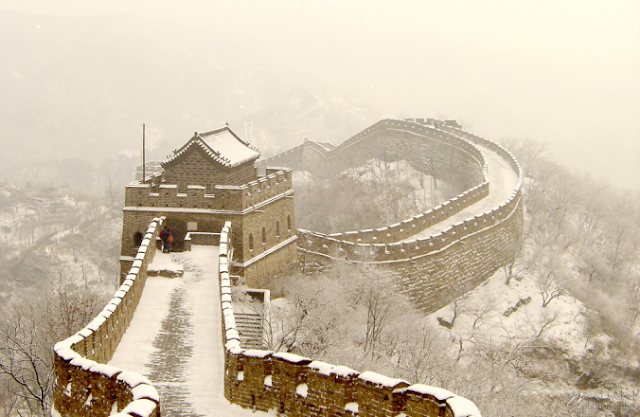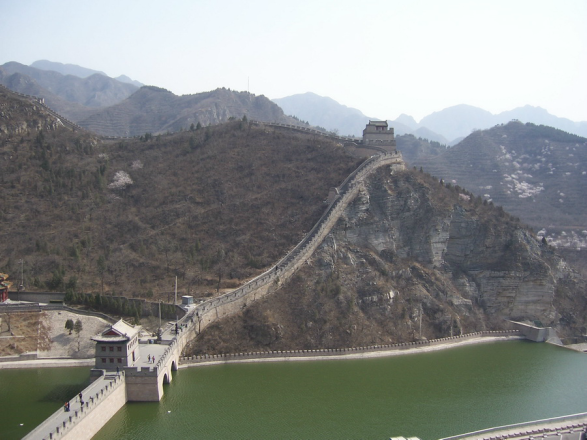The Great Wall of China
is the longest and largest monument of architecture in the world, the length of which is 8851.8 kilometers. It was created to protect northern China from the attacks of nomads. Construction lasted for 19 centuries - it began in the 3rd century. B.C. and ended in the XVI century. Along the entire Great Wall of China, casemates for guard and watchtowers are erected, and in the main mountain passages, there is a fortress.
is the longest and largest monument of architecture in the world, the length of which is 8851.8 kilometers. It was created to protect northern China from the attacks of nomads. Construction lasted for 19 centuries - it began in the 3rd century. B.C. and ended in the XVI century. Along the entire Great Wall of China, casemates for guard and watchtowers are erected, and in the main mountain passages, there is a fortress.
The history of the construction of the first wall began in the III century BC during the reign of Emperor Qin Shi-Huang Dynasty (Qin Dynasty) to protect the state from the Hunan nomadic raids. In construction, a fifth of the total population of the country, that is, about a million people participated. The length of the wall with all branches is 8 thousand 851 kilometers and 800 meters. The length of the wall from the edge to the edge is 2,500 km.
The wall was supposed to serve as the extreme northern line of the possible expansion (spread) of the Chinese themselves, to protect the subjects of the "Middle Empire" from the transition to a half-lonely way of life, a merger with the barbarians. This wall should clearly capture the boundaries of Chinese civilization, contribute to the preservation of a single empire, just composed of several conquered kingdoms.
During the reign of the Han Dynasty (206 BC - 220 AD), the wall was expanded westward to Dunhuang. A line of guarded towers, going deep into the desert to protect trade caravans from the nomadic raids, was also built.
The areas of the Great Wall that survived to this day were built during the reign of the Ming Dynasty (1368-1644). In this era, the main building materials were brick and stone blocks, which made the design more reliable. During the reign of Minh, the wall stretches from east to west from Shanhaiguang's bay on the shore of the Bokhail Bay of the Yellow Sea to the Yuymenguan bay, located on the edge of the modern provinces of Gansu and Xinjiang Uyghur.
Destruction and restoration of the wall
The Qing Dynasty (1644-1911), after overcoming the Wall with the help of the traitor Sanguya, treated this foreboding with contempt. During the three centuries, the Great Wall was almost completely destroyed under the influence of time. Only her small plot near Beijing, called Adaline, was properly supported - they were original "gate to the capital". In 1899, American newspapers reported that the wall would be completely demolished, and in its place will build a highway.
The Qing Dynasty (1644-1911), after overcoming the Wall with the help of the traitor Sanguya, treated this foreboding with contempt. During the three centuries, the Great Wall was almost completely destroyed under the influence of time. Only her small plot near Beijing, called Adaline, was properly supported - they were original "gate to the capital". In 1899, American newspapers reported that the wall would be completely demolished, and in its place will build a highway.
In 1984, under the initiative of Deng Xiaoping, a program to restore the Great Wall of China, funded by Chinese and international companies, as well as private individuals, was launched.
After some time it became known that the 70-kilometer section of the wall in the Gansu Province in the north-west of the country is subject to active erosion. The reason is the intensive farming in China, which has, since the 1950s, led to the depletion of groundwater, and as a result, the region became the main source and the center of the emergence of powerful sandstorms. More than 40 km of the wall has disappeared, only 10 km left, the height of the wall in some places decreased from five to two meters.
Interesting facts
When laying stone blocks of the wall was used sticky rice porridge with an admixture of quenched lime.
Contrary to the current opinion, the Great Wall of China can not be seen with the naked eye from orbital stations, although it is clearly visible on satellite imagery. For this, you need to have a vision of 8 times better than an ordinary person. And from the Moon, it can be seen with as much success as the human hair at a distance of 3 km.
- We will download some information about travel traffic, Great Wall of China:
- Follow us on this Blog to receive each new
- Leave a comment and share your experience














0 Comments